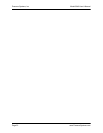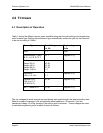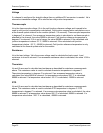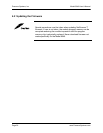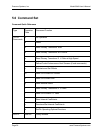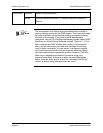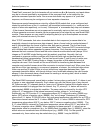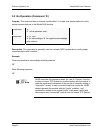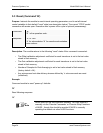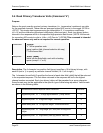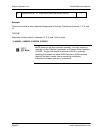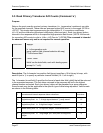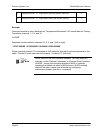
Pressure Systems, Inc. Model 9046 User’s Manual
Page 31 www.PressureSystems.com
"Read Data" command, the first character will not contain an A or N character, and each datum
may be in a format specified by a parameter of the command itself, or be implied by the
particular command operation code. One or more data fields may appear in a "pure data"
response, and these may be contiguous or have separator characters.
Streams are special transmissions output by a Model 9046 module that, once configured and
started by special forms of the ’
c’ command, will be emitted autonomously (i.e., continue to be
output at some rate repetitively, on its own). Subsequent ’
c’ commands may stop such streams
- if the streams themselves are not programmed to eventually expire on their own. A maximum
of three separate concurrent streams can be programmed to be output by any one Model 9046
module. These streams are very useful for acquiring data (at up to three separate concurrent
rates) with minimal intrusion by the host.
Most TCP/IP commands, that return immediate data in their response (or cause data to be
eventually returned via autonomous data streams), have a
format code (a number between 0
and 8) that establishes the format of all the data, both sent or returned. The first few format
codes (0, 1, 2, and 5) select various "human readable" data. These are ASCII numerical strings
with individual data values separated by space characters. Such formats require conversion
between the host command format and the native internal module data format (always 32-bit
integers or 32-bit IEEE single floating point (big endian) quantities). Normally, the host
command or response contains numbers with a decimal (with sign and decimal point) or
hexadecimal (dump) representation. The last two format codes (7 and 8) send or return pure
binary data (32-bit IEEE Floating Single or Integer, big-endian or little-endian) that only a
computer can read. Such formats are the most efficient for transferring data between host
computer and module firmware since little conversion is required at each end. When more than
one datum of this type appears in a command, response, or stream, the individual data values
follow one another (4 bytes/32-bits at a time) without any separators between them. Each
command description below, with format choices, has a small table showing the valid formats
allowed. A few commands have a fixed format for sending or returning data, which is stated
explicitly in its command description.
The Model 9046 has several
special datum values it returns when a particular E. U. datum is out
of range, or was calculated incorrectly. Such values vary with the Sensor type of any channel.
All Thermocouple (TC) channels have an "open circuit" detection feature that indicates when a
valid thermocouple is unplugged from its channel. Any TC
primary E. U. datum will be set to
approximately 99999 to indicate this condition. The same value is returned for its
other UTR
junction E. U. temperature if the internal measured junction voltage is "out-of-range".
Additionally, any UTR junction E. U. temperature above 55 ºC returns the value +88888; any
below -35ºC returns a negative value (-88888). Any "out-of-range" Resistance (R) channel
returns the E. U. datum 10,000,000 ohms. Any erroneous temperature calculation for an RTD or
Thermistor channel returns the E. U. datum 88888. The E. U. value +99999 is returned for RTD
temperature values above 850 ºC; any below -200 ºC returns a negative value (-99999). The
E. U. value 99999 is returned for Thermistor temperature values above 200 ºC; any below -80
ºC returns a negative value (-99999). When checking for these special E. U. values use an
approximate value for comparison (e.g., for 99999 check for greater than (>) 99998.0), since the
actual value can sometimes have a fractional part (e.g., 99998.1234). For the special ’
b’
command only, these values may be scaled down (e.g., 99998.1 may be 999.981).



